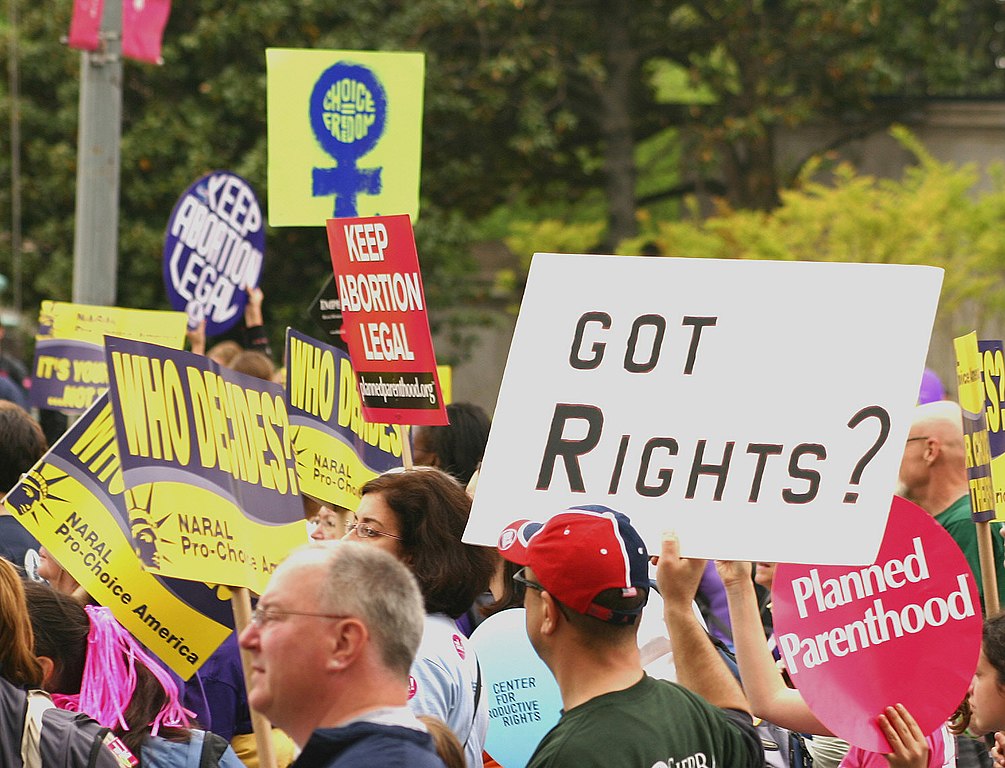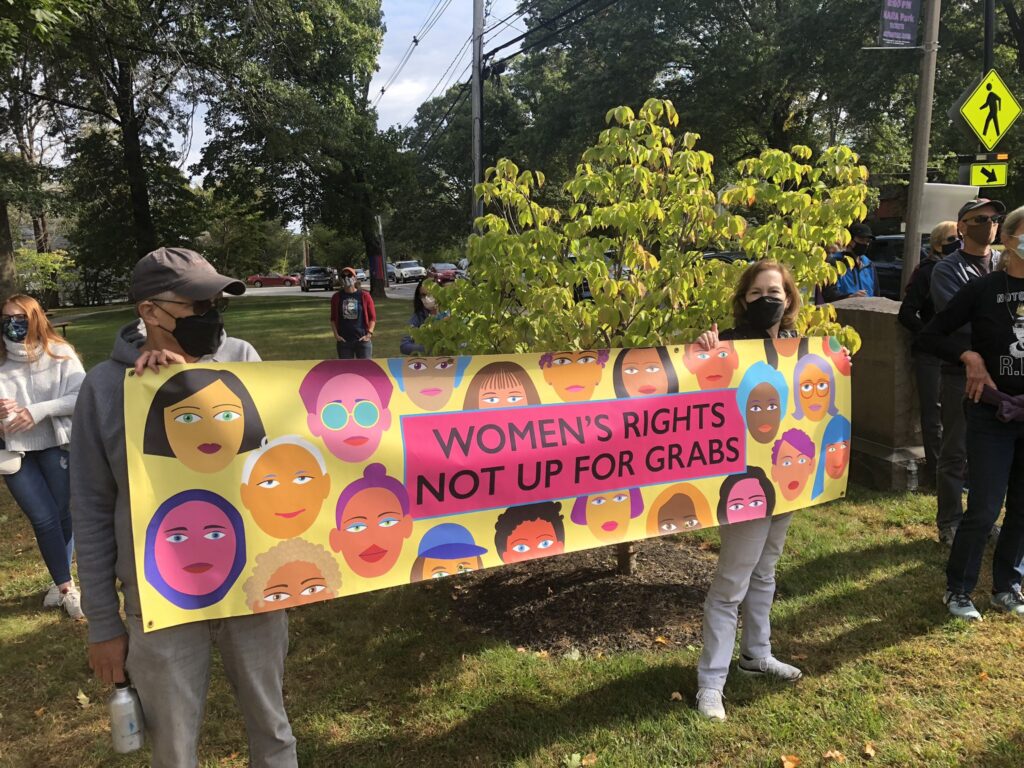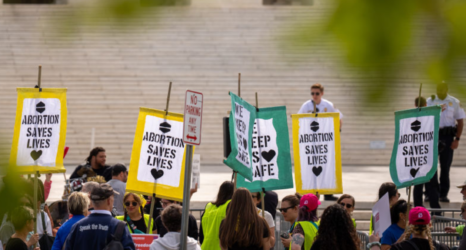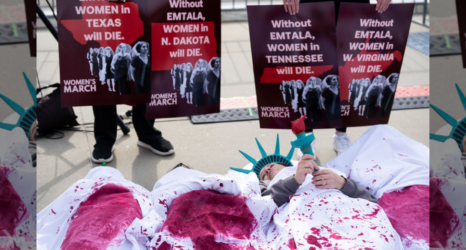Sometime soon, the U.S. Supreme Court could decide a fertilized egg is a person—opening the door to sweeping abortion restrictions across the country.

On December 1, 2021, the Supreme Court of the United States will hear Dobbs v. Jackson Women’s Health Organization—the case of the Mississippi law that bans abortions after 15 weeks of pregnancy, even though the law clearly violates the Court’s many precedents beginning with Roe v. Wade.
In August, the Court refused to issue an emergency injunction to stop S.B. 8, a Texas law banning abortion at about six weeks, from coming into effect. The constitutional right to abortion in the United States is clearly at a tipping point.
Mississippi’s brief in Dobbs makes for infuriating yet instructive reading. It lists a variety of arguments for the ultra-conservative majority on the Supreme Court to use in overturning Roe, as it is widely expected to do.
Besides making the traditional but irrelevant claim that the U.S. Constitution contains no textual protection for abortion rights (neither does it speak of same-sex marriage, for example), Mississippi asserts abortion is no longer needed because:
- Contraception is now virtually free of charge (even though Mississippi sought to weaken the Obamacare provision that made it so, and despite overwhelming evidence that contraceptives sometimes fail); and
- Today’s “women [can] attain both professional success and a rich family life.” (The groundbreaking Turnaway study showed the opposite: that failure to obtain an abortion causes significant financial distress.)
The brief makes a half-hearted claim that abortion procedures after 15 weeks are demeaning to the medical profession (the medical doctors who filed amicus curiae briefs in support of Jackson Women’s Health Organization clearly disagree). It also argues that abortions after 15 weeks endanger women’s health. (Legal abortion is a very safe procedure; carrying a pregnancy to term is much riskier).
Mississippi finally gets to the crux of its argument when it claims that Roe must be overturned because “scientific advances show that an unborn child has taken on the human form and features months before viability.” When life begins was a question that the Court in Roe had chosen not to decide. In Dobbs, the state of Mississippi invites the Court to opine on this matter.
Will the Court go there? Whereas previous U.S. state attempts to restrict access to abortion claimed to protect women’s health by, for example, requiring abortion providers to have hospital admitting privileges, the latest state anti-abortion laws do not have women’s health as their concern, despite their rhetoric to that effect. (The district court in Dobbs called the Mississippi legislature’s professed interest in women’s health “pure gaslighting.”)
These latest laws, rather, are rooted in the idea of embryonic and fetal personhood—a concept anti-abortion campaigners have been trying to establish in U.S. law for years. In Mississippi, in 2011, a ballot measure to declare fertilized eggs, embryos and fetuses as persons and give them constitutional rights, had already been attempted (and defeated). And under the Trump administration, the Department of Health and Human Services had issued a strategic plan that declared that life began at conception.
Anti-abortion extremists have long used powerful imagery in their quest to paint fetuses as persons. Large posters depicting fetuses as newborns are a mainstay of anti-abortion protests. Pea-sized, six-week embryos are described as having “heartbeats,” while 20-week fetuses are said to feel pain. Neither of these claims are backed by science, but they pack an emotional punch.
Declaring that an embryo or fetus is a separate person under law—that is, a full bearer of rights—would have far-reaching implications for women and anyone who can become pregnant. If a fertilized egg or embryo has the right to life, that means that the pregnant person loses their ability to decide whether to carry the pregnancy, denying them their own rights to life, health and liberty.

It outlaws abortion, which is dangerous enough, but it goes much further—it authorizes the state to take up the fetus’s interests, and ultimately constructs the pregnant person in opposition to the fetus, and as a potential danger to it. From there, there is a very short distance to justifying surveillance, arrests, criminal charges, incarceration, detention and forced medical interventions to “protect” the fetus.
Sounds far-fetched? Not to low-income, Black and brown women in the U.S. National Advocates for Pregnant Women has documented 413 arrests of and forced medical interventions on pregnant women in the United States between
These coercive actions are often triggered by a woman’s use of drugs during pregnancy, and sometimes by her seeking help to address drug use. But cases have also been brought against women deciding to attempt a vaginal birth after a previous C-section (VBAC), suffering a miscarriage or a stillbirth, or being themselves victims of domestic violence. In about a third of the cases, it was health care personnel or social workers who had reported the woman.
The same phenomenon can be observed worldwide. Where abortion is completely or nearly completely banned, these kinds of cases become common place. Since 1998, following a lobbying campaign by the Catholic Church, the Constitution of El Salvador has declared that “life begins at conception”—thereby granting a fertilized egg full constitutional rights. Pregnant women are routinely denounced for their miscarriages and stillbirths, and hundreds of them have been incarcerated. Half of these women were initially reported to the authorities by their doctor.
Asked in 2020 what could be done to address this dire situation, José Apolonio Tobar Serrano, El Salvador’s solicitor general for human rights, invoked the Constitution to justify his inaction: “The rights of the person who will be born are the same as the rights of the person already born.”
In El Salvador as in the United States, the persons most affected are poor. As is the case everywhere, higher-income women and girls in Salvador have access to safe, albeit clandestine abortions.
It’s therefore not inconceivable that sometime soon, U.S. Supreme Court justices could decide that a fertilized egg is a person, opening the door to sweeping abortion restrictions across the country. This would no longer be about returning abortion regulation to individual states. State laws that protect abortion rights, in Colorado, New York or California, would be next in line for challenge.
Reproductive justice groups and feminist activists around the world have been sounding the alarm for years about the ultimate goals of anti-abortion forces. They have not always been taken seriously.
Upholding women’s full humanity and their reproductive autonomy is the reason feminists have fought so hard to change abortion laws, from Nepal to Ireland and Argentina. The stakes are now plain for all in the U.S. who did not care to see them before. The contested humanity of women and other persons capable of pregnancy, and especially that of low-income Black and brown women, has always been at the heart of this struggle.
The answer must be: Yes, women are full human beings, and they must be able to control their lives, their reproduction and their bodies. The alternative is terrifying.
Up next:





